The LEGO Group is right in the thick of pounding out Ideas sets. At this point, the completionists are probably having a hard time keeping up with collecting the entire line. But there are definitely some you don’t want to miss. Under the microscope next is LEGO Ideas 21342 The Insect Collection. While it looks a fair bit more detailed than the original fan submission by José María Pérez Suero, it holds onto the spirit of that design. Join us as we get out our magnifying glasses and take a closer look at this seemingly beautiful build. The set, which contains 1111 pieces, will be available Sept. 7th and retail for US $79.99 | CAN $99.99 | UK £69.99.
Unboxing the parts and instructions
The box is very reminiscent of the Botanicals line, featuring a green band at the bottom, angles of the individual models, and an inset image of them on display.
Inside the box are 7 bags, numbered 1-7, and a cardboard sleeve containing the instructions. It may be noteworthy that half of these bags are quite light with minimal pieces.
In the sleeve are 4 instruction manuals. Well, technically there are only three with actual instructions – one for each insect. The fourth booklet contains the parts inventory, as well as all of the biographical information related to the designers and the bugs themselves. I like how the back of these each feature an outline of the insect with their scientific name.
The build
Each base starts off with an octagonal patch of reddish brown “dirt” bordered by a black tile trim. Very classy.
As previously mentioned, the bags are numbered. However, you don’t necessarily have to go in order. Because there are different instructions for each insect, you could split the bugs up into different build sessions, or amongst three people. But for the sake of this review, we’ll go in order of bag number, which begins with the Amazon-native blue morpho butterfly. (Morpho peleides.) After the base, we begin with a “stick” composed of a side-studded core and a handful of random plate-and-slope sub-assemblies.
Technic connectors provide a natural-looking bend at the top. Then added flowers and the new leaf elements make it nearly complete.
Colorful teeth set against more leaves provides us with a lovely, exotic bromeliad flower.
Finally, we add a bonus insect: an excellent little bee. A very welcome new element comes in the form of an egg printed with a bee’s abdomen. Another newer element – a transparent curved bar – provides the perfect pose.
Next we have the butterfly itself. Perhaps the simplest of the bunch, it’s comprised primarily of tile stacked on plate. That doesn’t make it less interesting though. We get some new color variants for the tiles, as well as newly printed tiles for the detailing. Theoretically, you could swap colors and make a variety of different butterflies.
With the help of a hinge, the two halves of each wing are connected at the perfect angle.
Finally, a little body is made, and the two wings are joined. It’s nice that some color is added to the bottom so it’s not just black. However, a nitpick would be that real blue morpho butterflies have some really interesting eye-spots on their underwing. We’ve seen a perfect element for this used in Hedwig’s eyes from set 76391, which would have been awesome.
Altogether, the first model kicks things off nicely as a tidy package.
Next up we have the rhino-like Hercules beetle (Dynastes hercules) from central and south America. As a chunkier model, we need a chunkier stand. However, this stick is built much the same way as that of the butterfly.
The base has a pair of white croissants that fit into a hollow on the underside of the stick/log to help hold it in place. They double as larvae, but they must be baby-baby larvae, because the real larvae can get to be about as big as the adults – roughly the size of your hand!
Like the butterfly stand, we have to cap this off with something interesting and colorful. This time we get a pair of lovely mushrooms! Specifically, they are Clitocybula azurea, which is slightly ironic. The tiny stud at the top is medium azure, however the actual cap is bright light blue. The 4×4 flat dome is new in this color.
The uber-strong Hercules beetle begins with a dense body. None of these builds are particularly complicated, but this is the most complicated of the bunch. I am a fan of how dark brown 1×2 wedges make up the segments of the abdomen.
The giant mandible and head are comprised of an accurate-looking lower half attached via ball joint. It’s eyes are made from reddish brown Technic balls that are still quite rare and only in two other (expensive) sets. The upper horn is formed using a perfect piece for the job: a black dragon tail/neck. This element is new in that color. 3×2 curved wedges, new in black, smooth out the thorax.
Hinged cylindrical connectors and bucket handles make for great legs. Then, instead of completing the entire insect and then placing it on the branch (like the other critters), it is at this point where we affix it to its home. He looks a little naked and silly without his wings and hard elytron (wing casing).
Speaking of which, these are made up of some interesting part color variants. Apart from minifigure and animal elements, we don’t see nougat (as apposed to light or medium nougat) very often.
Clips and barred elements allow for optimal posing, and now this insect is finished.
As a fun bonus, removing the wings allows us to fold down his elytron for a smooth look.
We travel to the other side of the globe with our final base. While praying mantises are found in several parts of the world, the Emmenopterys henryi is found in Asia (mainly China). Here, its delicate flowers are made with egg shells. As with the other models, we get a secondary critter – ladybugs.
Like the Botanicals Orchid, dark green windscreens make up the lower leaves.
Interestingly, the Chinese mantis (Tenodera sinesis) is just as big as the other insects, but feels like it consists of fewer parts. The bag seems rather light/empty, but perhaps it all comes down to the spindly nature of the creature. It was a pleasure to finish with this one, as it felt like saving the best for last. Lovely parts usage here includes sand green revolvers for feet, fancy lime Ninjago swords for forelegs, pearl gold crowbars for antennae, and printed Technic balls for eyes. The tapered hinge plate for its folded wings looks like it was made for this model.
All of the insects could sit without their decorative stands, but the mantis arguably looks the best and has the most posing ability.
That said, when placed on the base, it looks superb.
The completed model
Together, the trio are a little symphony of color. They are bigger than their images on the box, which always feels nice. Yet even though they’re bigger, they’re a perfect display size, and could sit wonderfully next to your Botanical Collection plants.
The following GIFs are just to give you a little 360 taste of each build. For the butterfly, apart from the beautiful color on the butterfly itself, the bee is also a wonderful highlight.
As with the bee and flower that go with the butterfly, the mushrooms of the beetle set it off beautifully. It’s kind of fun how the branch sort of matches the beetle too. But the best part is how posable the whole thing is, between its legs, wings, and outer elytron.
Finally, I must admit that I have a special place in my heart for the mantis. Aside from the great parts usage, it has always been my favorite bug. I love the posing, as well as how wonderfully everything fits together as a great representation of the animal.
Conclusions and recommendations
As you can likely tell from the tone of this review, I love the models. As a zoologist, I’ve been fascinated with creatures large and small my whole life. Even as a small child, I was chasing bugs around the yard, trying to catch a glimpse of their interesting lives. I would have died of happiness had I received this set as a gift. It is technically geared toward adults, but it’s really not a difficult build. In fact, it’s very fast. You could split it between three people to enjoy building together, but be forewarned that it might be over in a flash. (Unless you spend a solid 10 minutes beforehand arguing about who gets to build what.)
The price tag might make you wince, but unfortunately it falls in line with what LEGO sets are selling for these days. Nevertheless, whether you’re a fan of the Botanical line and nature, or of insects, or even just beautiful sets, I would highly recommend this kit.
While you’re here, check out our other LEGO reviews, as well as LEGO Ideas news. You can also check out articles on insects and bugs, as well as the Botanical Collection.
LEGO Ideas 21342 The Insect Collection will be available Sept. 7th and retail for US $79.99 | CAN $99.99 | UK £69.99.
The LEGO Group sent The Brothers Brick an early copy of this set for review. Providing TBB with products for review guarantees neither coverage nor positive reviews








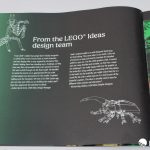




















































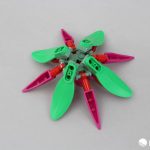


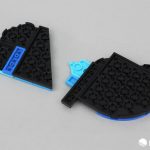

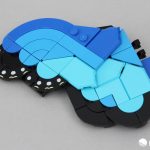





















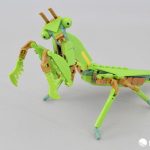






My grandson, almost 7, along with his 11y/o sister, will really, really like this set. He’s our “little bug man.” Yes, the price makes me wince, but from your article, it’ll be worth every piece to see their faces!! ????
Thanks for the excellent information.
In celebration, I’m going to plant $US $79.99 worth of wildflowers that are supportive of butterflies to breed in their natural environment. I hope many others who read this do the same.
Awesome idea, FlutterBy! :-D